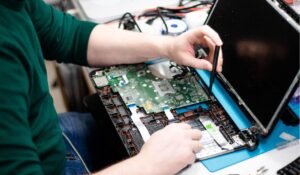When how to write radiology residency personal statement examples, one of the most critical components of your application is the personal statement. This document offers a unique opportunity to showcase your passion for radiology, highlight your experiences, and explain why you are an excellent fit for the program. Crafting a compelling personal statement can be challenging, but with the right approach, you can create a narrative that stands out to residency directors.
Understanding the Purpose of the Personal Statement

The personal statement serves several important purposes:
1. Demonstrate your commitment to radiology: Explain why you chose radiology and what motivates you to pursue a career in this field.
2. Highlight your qualifications: Showcase your relevant experiences, skills, and accomplishments.
3. Show your personality: Give residency directors a sense of who you are beyond your academic and professional achievements.
4. Explain your career goals: Describe your aspirations within radiology and how the residency program aligns with these goals.
5. Address any potential red flags: Provide context for any gaps, lower grades, or other potential concerns in your application.
Structuring Your Personal Statement
A well-structured personal statement typically includes the following sections:
1. Introduction
2. Motivation for Radiology
3. Relevant Experiences
4. Personal Qualities and Skills
5. Career Goals
1. Introduction
Your introduction should grab the reader’s attention and set the tone for the rest of the statement. It could be a personal anecdote, a defining moment, or a powerful statement about your passion for radiology.
Example:
“As I stood in the darkened room, the flickering images on the screen revealed a hidden world beneath the skin. It was in that moment, during my first shadowing experience with a radiologist, that I realized the profound impact of radiology on patient care.”
2. Motivation for Radiology
In this section, explain why you are drawn to radiology. Discuss specific experiences that sparked your interest and solidified your decision to pursue this specialty.
Example:
“My fascination with radiology began during my second year of medical school when I encountered a case of a young boy with a suspected brain tumor. Observing the radiologist meticulously analyze the MRI scans to pinpoint the diagnosis was a transformative experience. I was captivated by the blend of cutting-edge technology and clinical acumen required to interpret these images and make life-changing decisions.”
3. Relevant Experiences
Detail your experiences that have prepared you for a residency in radiology. This could include clinical rotations, research projects, volunteer work, or any other relevant activities. Highlight what you learned and how these experiences have shaped your skills and understanding of radiology.
Example:
“During my clinical rotations, I sought out every opportunity to engage with radiology. Whether it was assisting in image-guided procedures or participating in interdisciplinary case discussions, I immersed myself in the field. A particularly memorable experience was a research project on the use of advanced imaging techniques in early cancer detection. This project not only enhanced my technical skills but also reinforced the importance of radiological innovation in improving patient outcomes.”
4. Personal Qualities and Skills
Discuss the personal qualities and skills that make you a strong candidate for a radiology residency. These might include attention to detail, analytical thinking, communication skills, teamwork, and resilience.
Example:
“Radiology requires a keen eye for detail and the ability to analyze complex images critically. My background in biomedical engineering has honed my analytical skills, enabling me to approach diagnostic challenges methodically. Furthermore, my experience working in a multidisciplinary team during my clinical rotations has strengthened my communication and collaboration skills, which are essential for effective patient care in radiology.”
5. Career Goals
Articulate your short-term and long-term career goals. Explain how the residency program you are applying to will help you achieve these goals.
Example:
“In the short term, my goal is to complete a comprehensive radiology residency that provides exposure to a wide range of subspecialties and advanced imaging techniques. Long-term, I aspire to specialize in neuroradiology, contributing to advancements in the diagnosis and treatment of neurological disorders. The radiology residency program at XYZ Hospital, with its state-of-the-art facilities and renowned faculty, aligns perfectly with my career aspirations and commitment to excellence in patient care.”
Tips for Writing an Effective Personal Statement
1. Be Authentic: Be honest and genuine in your writing. Residency directors can tell when a statement is insincere or exaggerated.
2. Show, Don’t Tell: Use specific examples and anecdotes to illustrate your points rather than making broad, unsupported statements.
3. Be Concise: While it’s important to provide sufficient detail, avoid unnecessary fluff. Be clear and to the point.
4. Proofread: Ensure your statement is free of grammatical errors and typos. Consider asking a mentor or advisor to review it.
5. Tailor to Each Program: Customize your personal statement for each program you apply to, highlighting specific aspects that make you a good fit.
6. Highlight Unique Experiences: Focus on what makes you unique. Share experiences that differentiate you from other applicants.
Common Pitfalls to Avoid
1. Clichés and Overused Phrases: Avoid generic statements like “I have always wanted to be a doctor” or “I am passionate about helping people.”
2. Negativity: Do not dwell on negative experiences or failures. If you need to address a red flag, do so briefly and focus on what you learned from the experience.
3. Repetition: Do not repeat information already found in other parts of your application. Use the personal statement to add new insights.
4. Lack of Focus: Ensure your statement has a clear narrative and logical flow. Avoid jumping between unrelated topics.
5. Ignoring Instructions: Adhere to any guidelines provided by the residency program, including word count limits and specific prompts.
Final Thoughts
Writing a radiology residency personal statement is a vital part of your application process. It requires introspection, clarity, and a strategic approach to effectively convey your passion for radiology and your qualifications. By following the structure outlined above and paying attention to the provided tips, you can craft a personal statement that resonates with residency directors and enhances your chances of securing a position in your desired program.
Remember, your personal statement is not just a list of accomplishments but a narrative that weaves together your journey, experiences, and aspirations. Take the time to reflect on what drives you and how your unique background has prepared you for a career in radiology.
FAQs
1. HOW HARD IS IT TO MATCH RADIOLOGY?
Radiology is a moderately competitive specialty, but you need to remember that all residency programs have a limited number of spots available and a high number of applicants. So, to match, your application needs to stand out from the crowd.
2. WHEN SHOULD I START WRITING MY RADIOLOGY RESIDENCY PERSONAL STATEMENT?
You should spend at least six to eight weeks working on your personal statement.
3. HOW LONG IS A PERSONAL STATEMENT SUPPOSED TO BE?
Typically, a residency personal statement is between 650 and 850 words, but you should always verify the instructions while completing your ERAS or CaRMS application.
4. HOW SHOULD I FORMAT MY PERSONAL STATEMENT?
You should keep the formatting of your resume simple and neat. Stick to classic font styles like Arial or Times New Roman and an 11 or 12 points font size.
5. HOW IMPORTANT IS THE RESIDENCY PERSONAL STATEMENT?
Your personal statement is an essential component of your residency application. It gives the residency directors a chance to start getting to know the person behind all the grades and extracurriculars. It also allows them to assess your communication skills and get a feel for your commitment to the specialty. So do not underestimate the impact it can have on your residency application.
6. HOW COMMON MISTAKES SHOULD I AVOID FOR MY RADIOLOGY RESIDENCY PERSONAL STATEMENT?
You should avoid rehashing your residency CV or talking about things that can be found in your other application components. You should also avoid implying that you picked radiology solely because of the “lifestyle” it offers. This plays into the common misconception that radiologists make easy money, and it may not be received well by the admission committee.
7. WHAT IS A ROAD SPECIALTY?
ROAD stands for Radiology, Ophthalmology, Anesthesiology & Dermatology. These specialties are also sometimes referred to as “lifestyle specialties” because they typically offer more regular hours, a high income, and a chance for a better “work-life balance” than many of the other specialties like family medicine or surgery for example.
8. SHOULD I WRITE A DIFFERENT PERSONAL STATEMENT FOR EVERY PROGRAM I AM APPLYING TO?
Most students apply to 20+ programs, so doing this would be very time-consuming. Instead of writing a statement for each program, write a statement for each specialty you’re applying for.
Conclusion
In your conclusion, summarize the key points you’ve made in your statement, reiterate your passion for radiology, and express your readiness and enthusiasm for the residency program. This section should leave a lasting impression on the reader, reinforcing why you are an ideal candidate for their program.







































